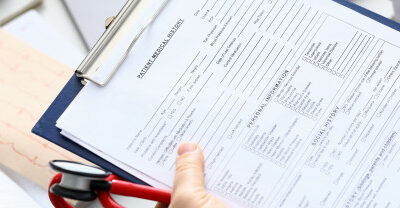Patient safety is a tenet immanent in the Hippocratic Oath: Primum Non-Nocere (First do no harm), which all practicing clinicians should strive to uphold.
No treatment plan can be absolutely devoid of risk, but some steps can be taken to minimize them. Risk minimization is also a significant indicator of the quality of treatment provided.
Patient safety is a topic that is multidimensional and extensive. Although it is primarily determined by the clinician’s awareness and actions, a host of other factors like organizational culture, clinic infrastructure, including electrical equipment, wiring, and plumbing of the building; competence of auxiliary personnel, among many other factors, play a crucial role too.

DENTAL CLINIC: AN ASSORTMENT OF POTENTIAL HAZARDS
Sharps like needles and orthodontic wires, airotor burs spinning at 250,000 rpm, X-ray units releasing ionizing radiation, laser and electrocautery units, an average dental clinic is actually an assortment of potential hazards; and these aren’t even clinician related. This is why instilling a culture promoting patient safety within the clinic staff is essential.
TO ERR IS HUMAN
However, not all errors are forgivable. Here are a few aspects of the healthcare delivery process that we as clinicians must deliver with meticulous care:

PATIENT ID, RECORDS, AND CONSENT
- Documentation of patient history, inclusive of allergy information, underlying systemic conditions, medication details, and correctly identified tooth (or site) involved.
- Ascertaining the trimester and accommodating adjustments in treatment procedures for pregnant women.
- Handwriting in patient records should be clear and legible; personalized abbreviations must be avoided.
- Designing an effective treatment plan that is acceptable to the patient, providing a clear and transparent explanation of risks involved, and obtaining informed consent, prior to commencing treatment.
- Before performing a procedure, cross-check the patient’s identity and site (or tooth) of intervention with clinical records.
INFECTION CONTROL
- Meticulous observation of infection control protocol is essential. Extra steps to minimize the transmission of COVID-19 should also be undertaken. Sterilization techniques specialized for specific equipment, like autoclaves for stainless steel instruments or glass bead sterilizers for endodontic files, should be utilized. Sterilizing devices like autoclaves should also be subjected to periodic tests with test kits containing B. stearothermophilus spores.
PRESCRIPTION
- The drug that is prescribed should be indicated for the patient’s condition after careful consideration of underlying systemic diseases, allergies, and potential drug interactions. Its generic name should be clearly specified, along with its route of administration and dosage.

TREATMENT PROCEDURES
- Treatment planning should be done with the utmost care, after considering: clinical history, underlying systemic conditions and medications, financial capacity, and patient motivation. Informed consent must be obtained without fail.
- An honest analysis of one’s clinical expertise and experience should be done before undertaking any procedure that one is unsure of executing correctly. If such procedures are undertaken, they must be performed under expert supervision, with complete transparency.
- Preoperative prophylaxis, and temporary discontinuation of medications in medically compromised patients, should be recommended only after careful evaluation and approval from the patient’s physician.
- Postoperative instructions and follow-up appointment dates should be clearly explained to the patient.
OTHER HAZARDS
- Use rubber dams and high-volume ejectors to prevent accidental ingestion of files, cement, and enamel debris.
- Removable appliances should be designed to ensure that they do not create choking hazards.
- Heated dental materials like gutta-percha, green stick compound, impression compound, etc., should be carefully handled within the mouth to prevent burns.
- Instruments implemented intraorally, like handpiece, laser and electrocautery units, electronic pulp testers, etc., must be employed with utmost care; after thoroughly observing their individual safety instructions.
- Providing patients with safety goggles, hairnets, and specially designed masks to prevent accidental exposure to debris and splatter.
- To avoid X-ray hazards, use of lead aprons and thyroid collars and maintaining proper barriers and distance from the unit during its operation can go a long way.
- Correct ergonomics of patient and operator chairs can prevent undue strain and discomfort during procedures.

INSPIRING A CULTURE OF PATIENT SAFETY
Dental practice has profoundly advanced in the 21st century, and not all of it can be attributed to technological innovations. An enhanced sense of responsibility for the patient’s well-being and the emergence of patient safety training courses have also contributed to this advancement.
The establishment of safety standards by organizations like clinic chains and hospitals, six sigma monitoring, educating clinical staff about patient safety, and encouraging an attitude of transparency towards patients; will help establish a culture of patient safety among dentists. Thus promoting oral health, reducing apprehension, and gaining the trust of all patients.
HIGHLIGHTS
- Correct documentation of the patient’s case history is crucial. Be especially careful about underlying systemic conditions, current medications, and allergies.
- Informed consent should be obtained prior to commencing treatment.
- Medicines should be prescribed after careful consideration of their indications, contraindications, and potential drug interactions.
- Meticulously following infection control protocol can go a long way to minimize risk.
- Treatment procedures that one is not sufficiently adept in should be undertaken only under expert supervision.
- Postoperative instructions and follow-up dates should be clearly explained to the patient.
- Be especially vigilant while treating pregnant patients.
- Keeping oneself and one’s clinic staff educated about patient safety standards in dentistry can go a long way in advancing one’s practice by improving the quality of treatment offered and gaining the patients’ trust.





0 Comments